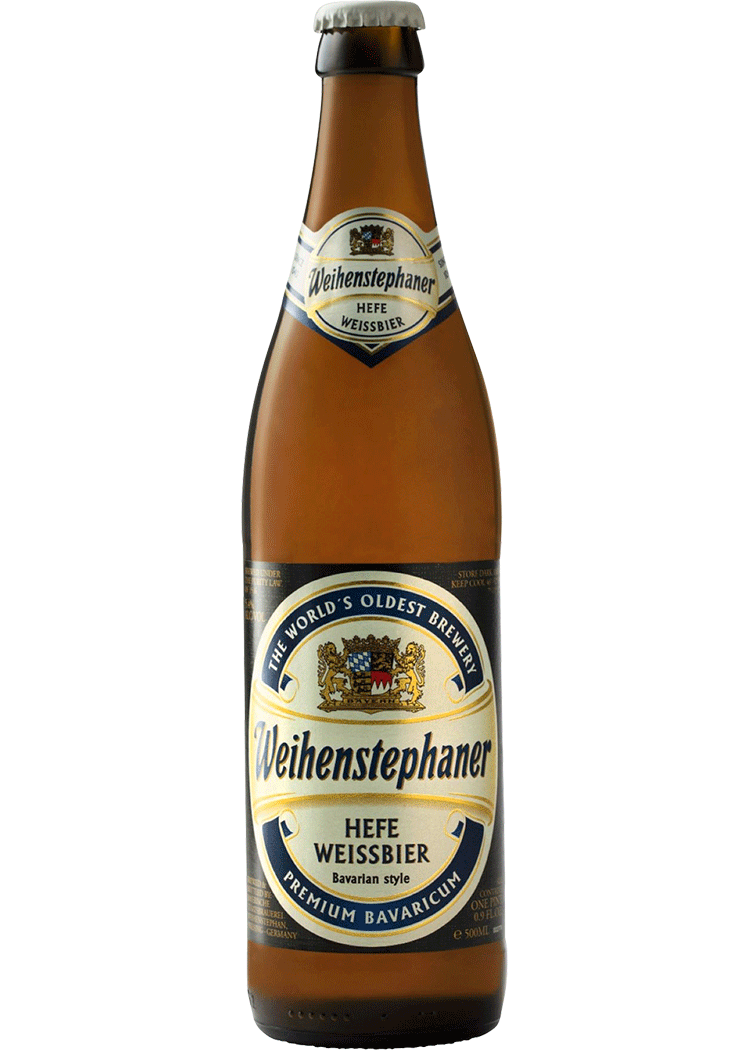tap to enlarge
Weihenstephaner Hefe Weissbier
16.9oz Btl
$4.99
+CRV
*Price, vintage and availability may vary by store.
*Price, vintage and availability may vary by store.
Product Highlights
Germany- Hefeweissbier- 5.4% ABV. The benchmark of the Hefe style. A full-bodied golden yellow wheat beer with aromas of cloves. Finishes clean with a refreshing banana flavor that makes you want to take another sip.
FruityWheatBanana
Product Details
OVERVIEW
Subtype / Style
What is Hefeweizen? “Hefe” (“with yeast”) and “weizen” (“wheat”) – also called Hefeweissbier – is the German-style wheat beer that is perhaps the most well-known wheat beer style. Unfiltered Hefeweizen is cloudy in appearance, with a pale to light-amber color. The yeast contributes to the mouth-feel and medium body, with yeasty esters evoking banana aroma and flavor, as well as the phenolic spiciness of clove and sometimes vanilla. Some of the best Hefeweizen food pairings include German fare and seafood dishes.
Producer Story
Beer has been brewed on site of Germany’s Bayerische Staatsbrauerei Weihenstephan (the Bavarian State Brewery at Weihenstephan) for approximately 1,000 years, so Weihenstephan has a good claim on being the oldest brewery in the world. It began as a monastery brewery, duly recorded when the abbot received a license from the city of Freising to brew and sell beer in 1040. It was the beginning of a long brewing legacy amid challenges that spanned centuries.
Between 1085 and 1463, the Weihenstephan monastery burned down completely four times and was destroyed or depopulated by three plagues, various famines and an earthquake. Each time, the monks rebuilt the monastery and brewery and continued to refine their brewing art. What these natural disasters could not take away, the state of Bavaria did in 1803 when, in a wave of secularization, it dissolved the monastery and repurposed its buildings. The brewery, however, remained, operating under state supervision.
In 1852, Bavaria’s Central Agricultural School and its brewing students moved to Weihenstephan. The school became the University of Agriculture and Brewing in 1919 and then the Bavarian State Brewery at Weihenstephan two years later. By 1930, it was incorporated with the Technical University of Munich and became the center of world brewing technology.
Despite Weihenstephan’s likely status as the world’s oldest brewery, it is also one of the most modern, with a unique combination of tradition and state-of-the-art science contributing to its top-quality brews. Weihenstephaner beers include Weihenstephaner Original (Munich Helles Lager), Korbinian (Doppelbock), Kristall Weissbier, Hefe Weissbier, Hefe Weissbier Dark and Vitus.
Source: Brauerei Weihenstephan
